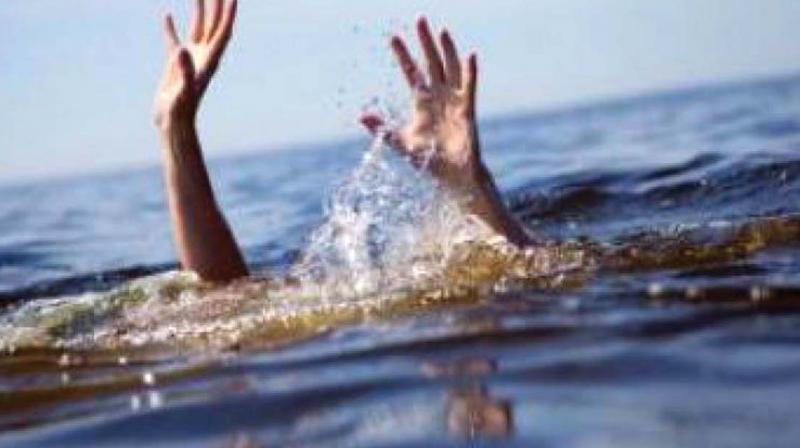
By Nawara Fattahova
KUWAIT: Kuwait witnessed a troubling trend in drowning and near drowning cases over the spring and summer due to the COVID-19 pandemic, as fewer people traveled and more spent leisure time at the beach. "As many people didn't travel this year due to the pandemic, a large number rented chalets in the south, even though they are not familiar with the sea and have never owned a chalet or stayed in it," Col Bader Al-Kdem, Chief of the Search and Rescue Department at the Kuwait Marine Fire Department explained to Kuwait Times.
"Parents there just leave the kids without watching them, and they drown due to their negligence. Also, those who are not experienced should not go on boat trips alone or without an experienced captain. Moreover, many boat owners used their boats without maintenance, as during the curfew the shops were closed."
According to official statistics for the period between Jan 1, 2020 and June 30, 2020, five people died at sea, while the rescue brigade received 47 rescue reports and two fire reports at sea. Drowning cases were much higher during the past two months (July and August), but official statistics are not available yet. A total of 28 people drowned in 2018, the last year for which confirmed statistics was available.
According to Col Bader Al-Kdem, Chief of the Search and Rescue Department at the Kuwait Marine Fire Department, many people cannot swim adequately, and risk their lives when swimming in dangerous areas or depths. "When the swimmer is not experienced, he gets muscle cramps while swimming. He keeps moving his hands and feet trying to swim, which makes his body heavier and he drowns. The swimmer should always relax his body, so he can float," Kdem told Kuwait Times.
Dangerous currents
Dangerous water currents and rip tides near the seashore also pose a hazard for inexperienced swimmers. "There are currents in Khairan and Ras Al-Ardh in Salmiya. Many drowning cases have taken place in these areas. In some cases, the water current pulls the swimmer near the rocks, and they hit their head and drown. Also in Khairan, there are artificial creeks - a water current once pulled a swimmer to the confluence of the creek and the sea," explained Kdem.
Many swimmers ignore signs posted in various spots along the seaside, warning against swimming. "But for many it's not ignorance, they just cannot read - especially those who don't read Arabic or English. So we are planning to put up signboards in different languages in cooperation with the Municipality," he noted.
There have been some strange incidents too. "Once we pulled an Arab national from a sewage outfall from which wastewater is discharged to the sea. He was swimming to get inside it and got stuck. He was lucky that we rescued him before the high tide, otherwise he would've died. Also, a Kuwaiti rented a boat and went on a sea trip, then got lost in the middle of the sea. He called us for help, and it was really difficult to reach him as he didn't even have a navigation system," he pointed out.
Swimmers and those spending time on the sea should also be aware of changing tides and currents. "One of the strangest cases that took place was over 10 years ago that I won't forget - of three brothers, out of whom only one survived. They went to catch crabs in Doha during low tide. It took them a while, so the rising water covered deep holes. When they were going back, the water in these holes pulled them in. After we arrived, we rescued one of them, but the other two drowned - one of them was missing in the sea for 15 days till we found his body," explained Kdem.
"Another strange drowning case was many years back, when a worker at the Entertainment City drowned in one of the water games. He got stuck in the mesh near the engine and drowned, although the water was less than a meter high," he recalled.
Rescue teams
Col Kdem is the representative of Kuwait at the International Maritime Organization (IMO). He explained that the marine search and rescue department, which was founded in 1956, is primarily responsible for accidents and rescue cases in the sea. But coastguards also undertake rescue operations, especially since they have more boats. But the main role of the coastguard is preserving security, as they are armed to deal with criminals at sea.
"The rescue department has three kinds of boats - large, medium and small. We have a total of 40 boats, and the big ones include four marine hospital beds. These usually deal with cruise ships, while the medium vessels are for firefighting, and finally the small ones are speedboats for emergency calls," Kdem said.
There are many search and rescue centers along the coast of Kuwait. "We have centers in the north, south, in Salmiya and the islands. New centers will be added under Jaber Causeway and Boubyan Port. The majority of accidents take place in the south. Having a marine fire department at the port is very important, as makes it attractive for ships, as their insurance premiums will drop due to safety at the port," he concluded.










